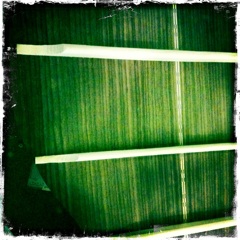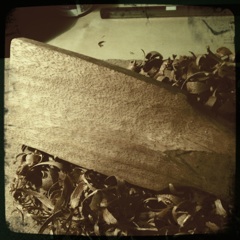There has to be something about playing the guitar that brings on a unique state of mind. It cries out for improvisation. It can be rhythmic and driving or melodic and wandering. Not to be a jerk about it, but I never saw anyone improvise on an oboe (not to pick on the oboe, mind you) the way I’ve seen people strum at a guitar. And maybe that’s the key. The guitar is a very democratic instrument. It welcomes all comers. In a couple of days almost anyone can learn three chords. Add in some truth and we get Bob Dylan, right? The point is that it’s a short leap from playing other people’s songs on the guitar to writing original tunes.
I remember when the light bulb went on for me. I was learning “Every Breath You Take†by The Police. I took the picking pattern (which is pure genius) and tried it with some different chords. It sounded cool. But the patterns wasn’t easy, so I changed it up. After an hour or so I had something that could be considered for the category of “song.â€
Now I have no idea how the tune actually went but I can bet on the fact that it was in the key of E minor and that somewhere it had a B7 in it. I know that last part because I played it for my guitar teacher and he told me that I’d stumbled onto one of the oldest “rules†of music. Rules? There were rules?
He pulled out some staff paper and started to sketch some triads. He explained some of the basic terms. By the end of 10 minutes, I had I – IV – V – I memorized. I had now unlocked “Wild Thingâ€, “Louie, Louieâ€, and most folk and rock tunes. When he added vi I was on fire. The 50s were mine!
When I found out that there were rules for putting these things in order and that Beethoven wasn’t just a master of great ideas but a master of the framework of Western Music ™ I was floored. A huge door was now open and I was staring into the bright light of day.
All of this played into my mother’s plan of training me on the classical guitar quite nicely. The etudes of Fernando Sor became very important to me. I analyzed them (before I knew that I was doing analysis) and tried to recreate them. I dabbled in variations. I made a lot of noise and maybe a little music once in a while. But I practiced and studied them incessantly. Odd stuff for a 13 year old boy to be doing.
The thing about writing music and being a “composer†that set in early was the many toothed beast. Yes, the piano. For a while I honestly didn’t think that I could be a composer without learning to play the piano. Fortunately, my laziness and complete lack of affinity for the instrument changed that. I couldn’t do squat at a keyboard (still can’t) so I made a go of it with paper, my guitar, and my mind’s ear. I lost the fear that I would never do anything of worth because I didn’t play the piano and pushed myself along under the tutelage of my superior teacher.
The rules came slowly to me. Wanting to break or ignore them did not. By the time I got to conservatory I didn’t much care for the idea of learning more rules and practicing them ad nauseum. I was a trial for my theory teachers. I still enjoy the sound of parallel fifths (suck it!) in my chorales. But I had the rules drilled into me and when I broke them I knew it and could point to it. A student that can accomplish that has a place to start.
Once the fire was lit, it was hard to control. Many late nights from that first guitar lesson until I had kids were spent staring at a piece of staff paper or working something out with a piece of notation software. And in those moments when my mind is absorbed in the phrase at hand, there really is nothing better. It’s like most creative endeavors. The state of flow becomes as much a goal as the final product. Being in the moment. Loving the work. Waiting for that moment when the ink is dry and the next sheet of blank paper is put on the table. The beauty of a never ending process.
It’s fun to look back at how it all started. The kernel of so many life decisions held up for inspection. And the wonder that it still drives so much of my thinking. It’s still so present. I’ve been through three lifetimes since I figured out that B7 to Em change. There are so many ways to make music now that didn’t exist then and my excitement for creating has only increased over time.
When this weird tear I’m on is done running its course I’m going to have some things to say about tools. I swore I wouldn’t write about software ever again because it always turns into something ugly for me, but I have a new toy and it has changed the way I create in such a positive way that it’s impossible not to share. More on that soon.

